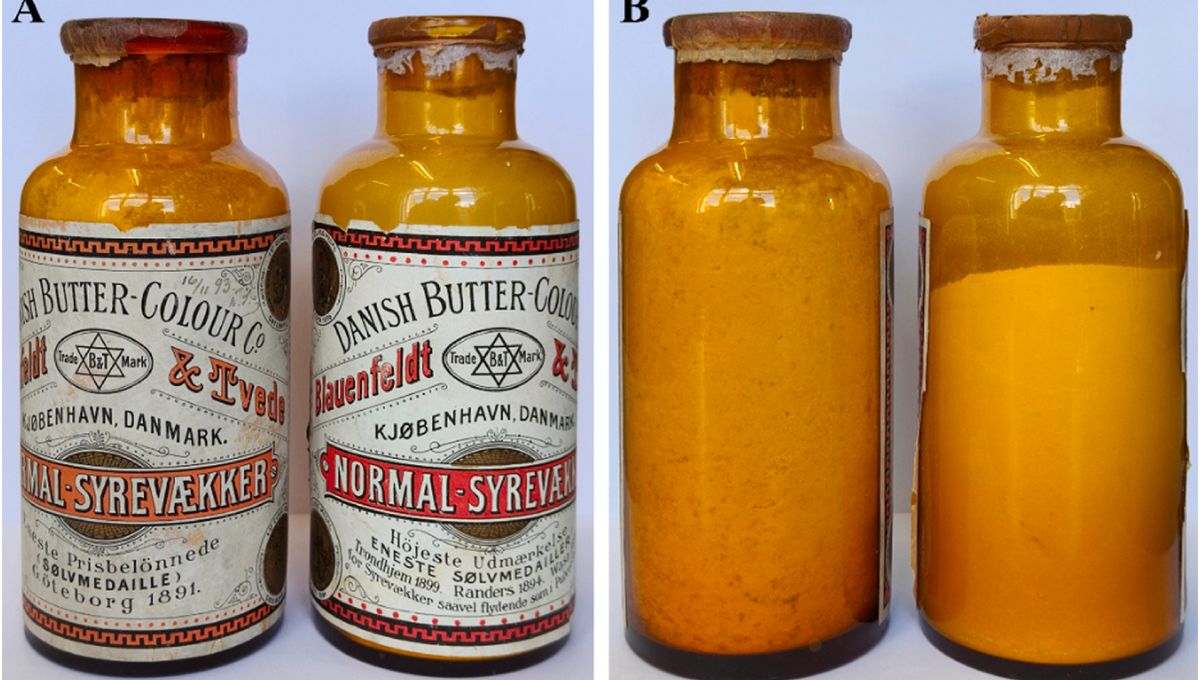
In a basement in Frederiksberg, Denmark, two bottles had been collecting dust for over a century. Last year, in a stroke of luck, researchers from the University of Copenhagen stumbled upon them once more, and found a suspect white powder lurking within. This residue, they would go on to uncover, contained bacteria from the 1890s and had once-upon-a-time been used to make butter, thus opening up a window into the Scandinavian country’s dairy-making past.
The rest of this article is behind a paywall. Please sign in or subscribe to access the full content.
“It was like opening a kind of microbiological relic. The fact that we were able to extract genetic information from bacteria used in Danish butter production 130 years ago was far more than we had dared to hope for,” Jørgen Leisner, author of a recent study presenting the findings, said in a statement.
Taking a peek at the bottles’ labels, Leisner and co-authors saw that they contained cultures of lactic acid bacteria – microbes that have long been used in food preservation and flavoring. To investigate further, they extracted and sequenced DNA from the samples, comparing it with databases of known bacteria.
In doing so, they discovered traces of the lactic acid bacteria Lactococcus cremoris, which is still used today by Danish dairies to acidify milk and kill harmful bacteria after pasteurization.
As well as this, the researchers identified genes in L. cremoris associated with dairy adaptation, including those that contribute to buttery flavors – something the team says is interesting given the “mild flavor profile preferred in Danish butter for the English market during the 19th century”.
Toward the end of the 1800s, Denmark began shipping butter to England on a large scale. To ensure good hygiene in its products, milk was first pasteurized before adding bacteria – called starter cultures – which ferment and convey properties of acidity, flavor, aroma, and texture while also having a preservative effect.
“The starter culture became the key to standardized butter production. It was no longer possible for each dairy to ferment in its own way – it was necessary to ensure that the products tasted the same, regardless of where in the country the butter was made. The starter culture made the taste reproducible,” Leisner added.
The team also found evidence of other, less savory, bacteria in the bottles: they were contaminated with Cutibacterium acnes – a skin bacterium that causes acne – and potentially pathogenic bacteria, including Staphylococcus aureus and Vibrio furnissii. Clearly, the dairy industry faced some steep production challenges in the 19th century.
“Overall, the contents of the bottles testify to the standardization of a dairy product that every farming family used to make themselves in a jar of sour milk kept close to the stove. But it also shows that hygiene conditions were still different from those we have today,” co-author Nathalia Brichet explained.
How about some ancient cheese to go with your bygone butter? Fair warning, it’s over 3,000 years old and was found smeared over mummies, so maybe stick to a bread-based accompaniment – the oldest loaf is thought to be an astonishing 8,600 years old.
The study is published in the International Dairy Journal.
Source Link: 130-Year-Old Butter Additive Discovered In Danish Basement Contains Bacteria From The 1890s